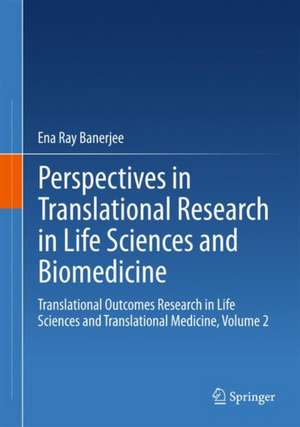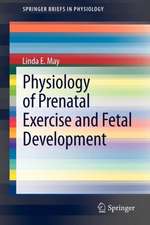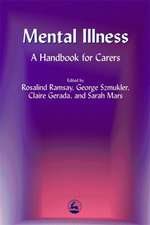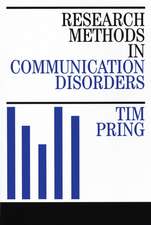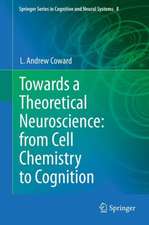Perspectives in Translational Research in Life Sciences and Biomedicine: Translational Outcomes Research in Life Sciences and Translational Medicine, Volume 2
Autor Ena Ray Banerjeeen Limba Engleză Hardback – 2 noi 2017
The book discusses topics such as tissue engineering to create lineage-specific cells for tissue-specific regeneration; how combination cultures of commensalistic bacteria can help boost immunity; development of functional food from natural products from plant, animal, and microbial sources in the nutraceuticals domain; as well as synthesis and mechanisms in nanomedicine and nanoscaffolds in biomedicine. The studies and discourses described touch upon topics that explore biodiversityfor the development of disease models, toxicity studies, developmental studies, and harvesting of bioactive compounds for alternative income generation and poverty alleviation, and as a result, bring about economic and ecologic sustainability.
This multidimensional and multidisciplinary book focuses on tissue-specific targeting by nanodrugs, development of bioengineering formats for cell- based, nutraceutical-based, functional-food-based and antibody-based green therapy designed tackle multifaceted diseases and syndromes.
| Toate formatele și edițiile | Preț | Express |
|---|---|---|
| Paperback (2) | 549.96 lei 38-44 zile | |
| Springer Nature Singapore – 11 dec 2018 | 549.96 lei 38-44 zile | |
| Springer Nature Singapore – 7 iun 2018 | 788.27 lei 38-44 zile | |
| Hardback (2) | 642.68 lei 3-5 săpt. | |
| Springer Nature Singapore – 2 noi 2017 | 642.68 lei 3-5 săpt. | |
| Springer Nature Singapore – 6 iun 2016 | 810.76 lei 38-44 zile |
Preț: 642.68 lei
Preț vechi: 756.09 lei
-15% Nou
Puncte Express: 964
Preț estimativ în valută:
122.97€ • 128.86$ • 101.66£
122.97€ • 128.86$ • 101.66£
Carte disponibilă
Livrare economică 22 martie-05 aprilie
Preluare comenzi: 021 569.72.76
Specificații
ISBN-13: 9789811058691
ISBN-10: 9811058695
Pagini: 132
Ilustrații: XII, 132 p. 32 illus., 22 illus. in color.
Dimensiuni: 178 x 254 mm
Greutate: 0.48 kg
Ediția:1st ed. 2017
Editura: Springer Nature Singapore
Colecția Springer
Locul publicării:Singapore, Singapore
ISBN-10: 9811058695
Pagini: 132
Ilustrații: XII, 132 p. 32 illus., 22 illus. in color.
Dimensiuni: 178 x 254 mm
Greutate: 0.48 kg
Ediția:1st ed. 2017
Editura: Springer Nature Singapore
Colecția Springer
Locul publicării:Singapore, Singapore
Cuprins
Chapter 1: Tissue Engineering and Nuances of Regenerative Medicine.- Chapter 2: Nanoparticles as anti-inflammatory drug and vehicle.- Chapter 3: Novel Combinatorial Probiotics in Therapy and Prophylaxis.- Chapter 4: Bioprospecting and Bioresource.- Chapter 5: Pharmacogenomics and Molecular Diagnostics.- Chapter 6: Nutraceutical- Prophylactic and Therapeutic Role of Functional Food in Health.
Notă biografică
Dr. Ena Ray Banerjee is an Associate Professor of Zoology at the University of Calcutta, India, where she heads the department’s Immunobiology and Regenerative Research Unit. Her interests are manifold but centered around translational outcomes research in the life sciences by exploring various facets of drug discovery. She has also formed a Consortium of experts from various disciplines to explore biodiversity through bioprospecting and converting them into bioresources currency but in an economically viable and ecologically and environmentally sustainable model.
An alumnus of the premiere educational institutions Lady Brabourne College and Gokhale Memorial Girls’ school, Dr. Banerjee has trained in immunobiology, immune modulation in inflammation and cytokine mediated inflammation at the Indian Institute of Chemical Biology and at the University of Washington School of Medicine, Seattle, USA. She led an asthma drug discovery project at Advinus Therapeutics, a TATA Enterprise. Her experience of working in academia and industry in India and the US prepared her for a unique role – that of translational research in the life sciences. Her large team of researchers at the Dept. of Zoology, University of Calcutta works on developing technology-intensive processes and products, developing animal models of diseases for screening novel drug entities, models of developmental biology, or bioresources from local biodiversity. The group engages in drug discovery using novel drugs (small molecules), herbal extracts (functional food), probiotics (neutraceuticals), novel antibody-mediated (camelid antibody) and cells (tissue engineering of stem cells of embryonic origin, adult tissue origin and umbilical cord-derived) in inflammatory disease models (tissue-specific inflammation in the lung and systemic inflammation) and degenerative disease models. She has published widely in premiere scientific journals and has spearheaded the rejuvenation of a world-class heritage museum because she believes that to do bioprospecting and molecular drug discovery, knowing and respecting our biodiversity is key. Through her efforts, this archived faunal repository is positioned to become a center of excellence for technology-based capacity building and an important educational interpretive center.
An alumnus of the premiere educational institutions Lady Brabourne College and Gokhale Memorial Girls’ school, Dr. Banerjee has trained in immunobiology, immune modulation in inflammation and cytokine mediated inflammation at the Indian Institute of Chemical Biology and at the University of Washington School of Medicine, Seattle, USA. She led an asthma drug discovery project at Advinus Therapeutics, a TATA Enterprise. Her experience of working in academia and industry in India and the US prepared her for a unique role – that of translational research in the life sciences. Her large team of researchers at the Dept. of Zoology, University of Calcutta works on developing technology-intensive processes and products, developing animal models of diseases for screening novel drug entities, models of developmental biology, or bioresources from local biodiversity. The group engages in drug discovery using novel drugs (small molecules), herbal extracts (functional food), probiotics (neutraceuticals), novel antibody-mediated (camelid antibody) and cells (tissue engineering of stem cells of embryonic origin, adult tissue origin and umbilical cord-derived) in inflammatory disease models (tissue-specific inflammation in the lung and systemic inflammation) and degenerative disease models. She has published widely in premiere scientific journals and has spearheaded the rejuvenation of a world-class heritage museum because she believes that to do bioprospecting and molecular drug discovery, knowing and respecting our biodiversity is key. Through her efforts, this archived faunal repository is positioned to become a center of excellence for technology-based capacity building and an important educational interpretive center.
Textul de pe ultima copertă
This book is a collation of translational research outcomes in the area of life research, which was formerly used mainly for academic pursuits. The studies described focus on innovative interdisciplinary approaches to unraveling problems in life sciences and biomedicine using biodiversity exploration and green technology. The techniques and models presented offer a ready reckoner for researchers in academic institutions and industry, and also provide valuable insights into fundamental research.
The book discusses topics such as tissue engineering to create lineage-specific cells for tissue-specific regeneration; how combination cultures of commensalistic bacteria can help boost immunity; development of functional food from natural products from plant, animal, and microbial sources in the nutraceuticals domain; as well as synthesis and mechanisms in nanomedicine and nanoscaffolds in biomedicine. The studies and discourses described touch upon topics that explore biodiversity for thedevelopment of disease models, toxicity studies, developmental studies, and harvesting of bioactive compounds for alternative income generation and poverty alleviation, and as a result, bring about economic and ecologic sustainability.
This multidimensional and multidisciplinary book focuses on tissue-specific targeting by nanodrugs, development of bioengineering formats for cell- based, nutraceutical-based, functional-food-based and antibody-based green therapy designed tackle multifaceted diseases and syndromes.
This multidimensional and multidisciplinary book focuses on tissue-specific targeting by nanodrugs, development of bioengineering formats for cell- based, nutraceutical-based, functional-food-based and antibody-based green therapy designed tackle multifaceted diseases and syndromes.
Caracteristici
Provides actual laboratory data helping readers to plan experiments Offers step-by-step and lucid directions in the “Materials & Methods” section Discusses the use of models in drug discovery in an exhaustive manner Elaborates the concepts of tissue differentiation with valuable and novel insights Includes supplementary material: sn.pub/extras
